German Shepherd Dogs also known as GSDs are one of the most popular dog breeds on earth. They rank 2nd in the AKC’s most popular dog breed list for a reason. They are extremely energetic, obedient, loyal, trainable, and excellent watchdogs. GSDs love to play and dig. If you are wishing to get one, get ready to wake up early and play with your GSD😉
German Shepherds are the favorite choice of Military and Police departments. GSDs help these authorities in sniffing out and locating bombs/narcotics, finding evidence, and clutching down criminals during combats.
Not only are they good Police Dogs, but GSDs are also good Therapy Dogs. They can be seen in hospitals spreading love with patients who need some affection and hope to get back to routine. These good bois are responsible to cheer them up by giving free cuddles and kisses.
You might already know about the amazing Rin Tin Tin family of German Shepherds!
The original Rin Tin Tin was a Hollywood star, he saved the Warner Bros Company from shutting down with the movie called Where The North Begins. The movie released in 1923 in the guidance of the dog’s master – Lee Duncan.
Rin Tin Tin the 4th also followed his acting talent and delivered a TV series called The Adventures of Rin Tin Tin.
Did You Know?
The Tv series “Adventures of Rin Tin Tin” was made to motivate the american dog parents to send their dogs in the army to protect the nation!
Table of Contents
German Shepherd Pictures
Quick Facts

At A Glance
About German Shepherds
As their name suggests German Shepherds originated from Germany and were bred to be guard dogs, although they originated from Germany, today they are found in almost all parts of the world due to their adaptability and qualities.
German shepherd weight varies from 75 to 95 pounds and height ranges between 22 to 26 inches. German Shepherds are intelligent, diligent, loyal, and highly trainable dogs. They have thick fur and were bred to be guard dogs. A GSD’s lifespan ranges from 9 to 13 years if they don’t fall prey to any diseases discussed later in the blog.
GSDs are the 2nd most popular breed in the America and 3rd most intelligent breed on the Earth. Not only this they have many other reasons to be popular like the famous Rin Tin Tin dog family, and movies like Terminator, I am Legend, Inspector Rex, and many more.
But according to experts the reason for their glory and fame is their intellectual capability, confidence, guarding skills, and the ability to risk their lives when needed.
German Shepherd Dog breed’s fierce looks and extraordinary guarding skills are the reason for them being the Best Police Dogs. They are generally found in hotspots sniffing out bombs, following clues, searching for evidence, and clutching down criminals.
Want to know how? Here is a video by MAI PM.
History

When it comes to German Shepherd history, we cannot start the story without Captain Max Von Stephanitz, who was a military man and had retired in 1898 to follow his passion for breeding a herding dog.
During his research in 1899, he attended a dog show and came across a breed called Hektor Linksrhein. The dog had all traits of being athletic, intelligent, and an excellent working dog who could win them a war!
He immediately bought the dog and named him Horand v Grafeth to start the Verein für Deutsche Schäferhunde (Society for German Shepherd Dogs). Horand was the first dog to register under this society. The breed in just a few decades became so famous that it still ranks 2nd in the AKC’s most popular dog list.
Due to the beginning of Germany’s industrialization period, there was a fall in demand of herding dogs but Stephanitz couldn’t let his efforts of breeding a herding dog go in vain. He pitched an idea to let the dogs help military and police officers using his contacts he made as a military officer. This resulted in the dog’s use as a guard, supplier, sentry, messenger, and a rescuer in World War 1.
The excellent dog had got famous after World War 1, and a lot of people were interested in knowing its abilities and using it as a working dog. This led to extensive breeding of the dog with dogs that showed similar traits, and soon the dog was spreading all over Germany.
America was unknown to this breed until during a war in France, an American Gunnery Corporal – Lee Duncan picked up a five days old German Shepherd Dog and took him to his homeland (Los Angeles). If it didn’t ring a bell to you by now, let us tell you that Lee Duncan is the man behind the famous dog Rin Tin Tin who has featured in the silent movie called “Where The North Ends” produced by Warner Bros.
Did you know?
Warner Bros were at the verge of losing the company when they gave a chance to Lee Duncan and made this movie. The movie was an overnight success, and Rinty became the go-to actor when they got into trouble.
After this the breed laid footsteps in America, it spread to various other countries as well. But all the other countries were a bit hesitant with its roots being German, and due to the war emotions, so they gave the breed a new name for their citizens to follow.
AKC called it Shepherd Dog till 1931, and England called the breed Alsatian Wolf Dog till 1977. Both countries went back to the original name of German Shepherd Dog.
The breed then spread to almost all parts of America, and people started breeding the GSD with other dogs for better appearance to feature them in dog shows, which led to improper breeding. There came a point in time when the US Military was importing dogs from Germany because they didn’t find a GSD which fulfilled all the original traits.
After seeing such plagued genetic health conditions of the dog, AKC released the breeding standards, and America put back its emphasis on the abilities rather than the looks and appearance.
Facts Theatre
Parenting Guide
- Germans Shepherds are very intelligent and energetic dogs.
His intelligence and energy if put to productive use will give you a calm, well-behaved, and loyal dog.
But if his energy and intelligence are not addressed you will be a victim of German Shepherd aggression quite soon, this includes them barking, biting, and attacking strangers. - German Shepherds are only for those dog parents who have enough time for them. If you travel a lot, then look for a low maintenance dog.
- German Shepherds are excellent watchdogs and are naturally designed to protect the owner. They are very good with kids and are a responsible dog breed.
- By any chance, if you are a First Time Dog Owner, then you should definitely avoid this one and find other suitable breeds.
- They suffer from a lot of diseases and are high maintenance dogs; the vet bills will be a bit on the higher side. They are also known as “German Shedders” as they shed a lot!
- You will need a vacuum cleaner for sure. If you are by any chance Hypoallergenic, then forget about this breed and check these out.
- If you live in a small or a medium apartment, then this dog might not be for you as they need open spaces to drain their energy. The dogs are designed to be a working dog and even in their non-play time, they should have space to move around.
If you have a garden attached to your apartment or if you live in a big house, they should not be a problem. - We suggest you adopt a dog from rescue centers before you shop; this will give an innocent dog a happy future 😊
- GSDs are bred to work and solve problems. Try to drain their mental and physical energy through training and exercise.
- A GSD is a protective dog and sometimes can get carried away, make sure you are socializing and training him from a young age.
- You must treat him the stop command to stop improper behavior in public like chewing, humping, or barking.
- Watch out for symptoms of bone diseases as GSDs are prone to suffer from a majority of bone diseases like Hip Dysplasia, Elbow Dysplasia, and Degenerative Myelopathy.
- Also, avoid strenuous activity after eating as this increases the risk of bloating.
- GSDs due to their double coat are susceptible to hot weather. Try to follow basic practices to keep him cool, like providing plenty of water (1 ounce of fluids per pound of body weight), and give a shed.
- GSDs (aka German Shedders) will shed a lot, buy a vacuum cleaner. You will need to brush their coat everyday during the shedding season and thrice a week in other seasons.
Personality & Temperament
- German Shepherds are very intelligent dogs. If these dogs are not put to constructive work they will find destructive alternatives for sure.
- GSDs are reserved dogs and won’t involve much with new people or other pets. They are like the grandfather of the family who doesn’t involve much but control everything.
- They are very loyal to their owner and family. They would even take a bullet to save their family.
- GSDs are suspicious of strangers and might grow as a high tempered dog who attacks strangers if you don’t socialize and train him from a young age.
- He is a guardian and will take good care of your kids, but make sure that you train them to keep them calm around other kids as well. If you have a toddler and the GSD is fully grown, he might unknowingly knock your baby down, and hence you should always have an eye in this condition.
- They are cool with other pets if introduced from puppyhood, but if an adult GSD comes into a family with other pets, it might get difficult for everyone in the house to adapt, get a trainer in this case.
- You cannot leave a GSD alone as they rank low in living alone for longer durations.
- While carrying out German shepherd training and socializing them is a must, make sure you use good ways of training like – Positive Reinforcements, Clicker Training, or Relationship Based Training.
Never punish your dog for incorrect behavior by getting physical with him, treat him like your own baby, and then see from the shoes of a father. You may give a treat, make use of NO or other obedience training techniques.
Did You Know?
Da Sylvia-Stasiewicz, who trained president Obamas’ Portuguese Water Dog, Bo, used the Positive Reinforcement technique to train him.
Grooming & Colors
Following are all the accepted as well as non-accepted colors of a German Shepherd Dog:
| GSD Colors | Standard Color |
|---|---|
| Bi color | ✅ |
| Sable | ✅ |
| Black & Cream | ✅ |
| Black & Red | ✅ |
| Black & Silver | ✅ |
| Black & Tan | ✅ |
| Blue | ✅ |
| Gray | ✅ |
| Liver | ✅ |
| Sable | ✅ |
| White | ✅ |
| Fawn Color | ❌ |
| Pure Red | ❌ |
| Spotted Black and White | ❌ |
If we talk about the German shepherd coat, they have a thick double coat with a thick undercoat. Their outer coat is thick, dense and has flat hairs that are close to the dog’s body. Their undercoat is thicker than the outer or guard coat. They have more fur near the neck area and rear limb area.
Their coat keeps them warm in cold weather and blocks UV rays in hot summers. They shed normally but heavily once or twice a year.
Following are some German shepherd grooming tips to keep your GSD healthy and smelling good!
- A GSD’s nails should be cut or grind once in a month in they don’t wear off themselves. Long nails cause problems for the dog as they tend to scratch against surfaces or get cut while playing leaving blood to come out of the skin.
- You should bathe a GSD once in a month and not too frequently. After bathing him make sure that you are drying him thoroughly using a hairdryer slowly on each part of the body. Don’t use the dryer all over the body in a random movement manner as it will tangle the fur.
- Heavy shedding occurs in spring to get rid of the winter coat so that the dog doesn’t suffer from the summer heat. In the fall, the lightweight fur is shed so that the winter fur grows to protect from cold. In these 2 phases, you will have to comb his hair every day to avoid spreading of the hair to your furniture or floor.
You may need de-shedding tools like Slicker Brushes, De-matting Rake, Pin and Bristle brushes to groom him. Here is a video to show you how to groom a GSD.
Feeding
Feeding is a very crucial thing in the hands of a dog owner. You must be very careful and seek timely vet suggestions to keep a GSD healthy.
We at dogisworld do our best to reduce the spread of misinformation and deliver the most accurate and trustful information to our audiences.
Following is how the feeding of a German shepherd puppy, adult and senior looks like:
Puppy Phase – 0 – 12 Months (*May vary in some dogs)
[WPSM_AC id=11319]
Adult Phase – 12 Months – 6 Years.
German Shepherds grow up to 2 feet tall within 2 years and reach their mental maturity by 3 years. Their nutrition in the adult phase is a lot less complicated than in their puppyhood, which is true for all breeds. In their adult stage, they need high protein food, which supports their bone health but doesn’t feed in excess, stopping by a vet will be a good option once he becomes an adult.
You should decrease the number of feedings to 2-3 times a day in their adulthood. Feeding too much in one go is not recommended as it bloats the stomach of dogs especially large dogs. Spread the meals of the dog in 3 sections and feed throughout the day, don’t forget to calculate the permissible daily intake and sticking to it.
When it comes to German Shepherd dog food, we recommend Eukanuba Breed Specific German Shepherd dog food. This product has a perfect blend of Omega 3 and 6 fatty acids to make the coat shiny. It is proven to help the GSDs across the world and has excellent reviews almost everywhere.
You can also start feeding human foods to dogs at this stage, but make sure that you are only feeding safe foods. To help you with this, we have curated an exciting article with downloadable infographics that tells you what Fruits, Vegetables, Meat, Dairy, and Snacks are good to feed your dog.
Click here to read about Human Foods Safe For Dogs.
Senior Phase – After 6 Years.
When a GSD is 5 or 6, he is a senior dog. The diet changes as he reaches the senior milestone, and the best place to explore the changes is a vet’s clinic. The vet would do some inspection and based on the results which change from dog to dog prescribe dietary changes.
Health and Vaccinations
Most of the dog breeds which have become famous are a result of intentional breeding and hence very few breeds today have the genuine breed standards. As time passes breeds are tweaked to the liking of dog owners, this differs from place to place.
It also brings out a breed whose characteristics are liked by a large set of audience but also brings some problems to their health.
GSDs were bred to be herding and working dogs, this required the dog to be intelligent, diligent, active, and loyal. These traits make the GSDs unique but due to the increased demand from defense organizations, breeding has increased importance on these traits and given rise to a new set of problems.
Generally a GSD may suffer from the following diseases.
1. Hip and Elbow Dysplasia
Large dog breeds especially, German Shepherd Dogs, are at a higher risk of this disorder.
In this disorder, the GSD loses the head of the thigh bone from the hip socket, which leads to lameness in the gait and improper walking. The dislodged thigh continues to inflame and cause arthritis if not treated on time.
The symptoms include – Decreased activity, loss of thigh muscle mass, noticeable enlargement of the shoulder muscles, stiffness or soreness after rising from rest, difficulty or reluctance rising, jumping, running, or climbing stairs.
It can only be diagnosed by getting an X-ray or radiographs of the pelvis; you will have to visit an orthopedic specialist to get your GSD diagnosed.
The treatment varies on factors like age, weight, and degree of laxity. The orthopedic specialist in case of less severe cases will prescribe medicines for the pain and suggest home physical therapy program. In more severe cases the hip is replaced with an artificial one; this is expensive.
2. Degenerative Myelopathy (DM)
Also known as chronic degenerative radiculomyelopathy (CDRM), the disease affects the spinal cord of the dog resulting in progressive hind limb weakness leading to paralysis. The exact cause of the disease is unknown for now, but the only proactive measure is to consult a doctor as soon as you see symptoms of arthritis in your dog.
The symptoms include – Gradual weakness of the hind limbs, dragging nails, difficulty in rising and jumping, stumbling, knuckling of the toes, wearing of the inner toes of the rear paws, loss of muscle mass and tremors in rear legs.
The disease is diagnosed at the age of 4 to 14 years. Doctors will inspect the medical history, physical examination, and diagnostic tests. X-rays and other imaging tests will be conducted to rule out if any other problem exists such as Hip Dysplasia, and arthritis. If other issues are not detected tests like cerebrospinal fluid (CSF) analysis, tissue biopsies, and neuromuscular tests are conducted. The diagnosis is both time and money consuming but it can put you ahead in understanding exactly your dog is going through.
Unfortunately, there is no treatment available for this disease which cures the disease from the root. But you can slow down the progression by keeping the dog physically active, you should take him for exercises, swimming, and walking. Physical therapy has shown good results in maintaining the quality of life. Alternatively, according to the vcahospitals.com you can depend on a combination of epsilon-aminocaproic acid, N-acetylcysteine, prednisone, vitamins B, C, and E to slow down the degeneration.
3. Bloating & Gastric Dilatation-Volvulus
When your dog’s stomach gets filled with gas, fluids, or food it is called bloating of the stomach. The pressure created due to the accumulation will put a strain on other organs of your dog. When this pressure is not stopped, the stomach may rotate or twist, this condition is called Dilatation Volvulus.
The symptoms include acting restless, drooling, swollen stomach, trying to vomit but nothing will come out, stretch to create a slope towards the mouth, pale gums, rapid heartbeat, and shortness of breath.
The causes of this disease include having one meal in a day, eating rapidly, strenuous physical activity after eating, eating, or drinking excessively and stress. Deep chested breeds like GSDs are at a higher risk for bloating.
The treatment includes running X-rays and other imaging tests followed by putting a tube through the dog’s throat down to the stomach to release the pressure that has accumulated. In case of Dilatation Volvulus or twisted stomach, it gets difficult to pass the pipe, hence the vet will first fix the position by rotating and placing the stomach to its natural position and then if needed pass the pipe through the throat.
Preventive measures include not using raised bowls unless advised by the vet, feeding them in a quiet place to avoid stress or fast eating (you may also use slow feeders), reducing their food in one meal and spreading evenly across 3 to 4 meals and not letting them do strenuous physical activity 1 to 2 hours after a meal.
4. Other Diseases
Heart diseases, Epilepsy and other vision problems, Bleeding disorders, Hemophilia, and Allergies are some of the other problems a GSD is most likely to fall ill to.
Are you thinking to get a GSD home soon?
Then go through the list of 9 Tips to Bring Home a Healthy German Shepherd Puppy and make sure you buy a pet insurance after you get a GSD home.
Generally speaking, a GSD must be vaccinated with canine parvovirus and for canine distemper. A GSD should be vaccinated every 6, 8, 10, 12, 14, and 16 weeks of age, and then every 3 years as they grow old.
There is a lot of ground to cover when it comes to vaccinations, read our Guide To Dog Vaccination to get an in-depth understanding of dog vaccinations.
Frequently Asked Questions
[WPSM_AC id=11362]
Similar Breeds
- Belgian Milionis
- Belgian Tervuren
- Bohemian Shepherd
- Belgian Sheepdog
Is This Article Worth A Share?
It takes a lot of time and effort for our content writers to write the post from scratch till making it error-free. (To be precise 5 days)
You can help us by sharing this article with as many people as possible.
You can also like the article or subscribe to our Instagram, Facebook, or YouTube channels to show support.
Finally, we would love to know about what you think about the German Shepherd Dog in the comment section below.







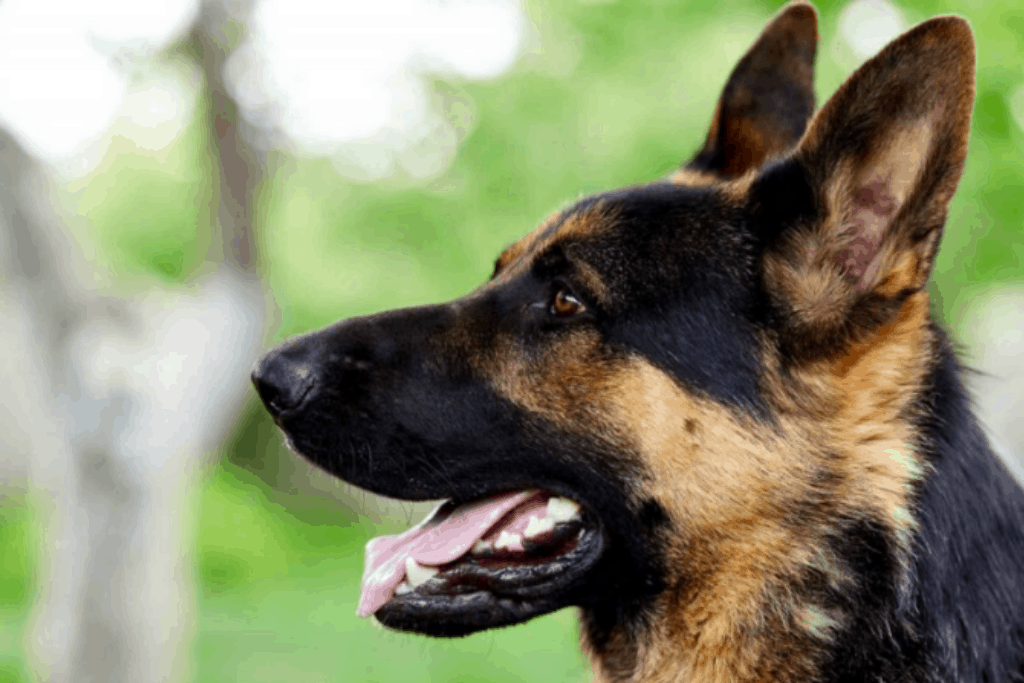






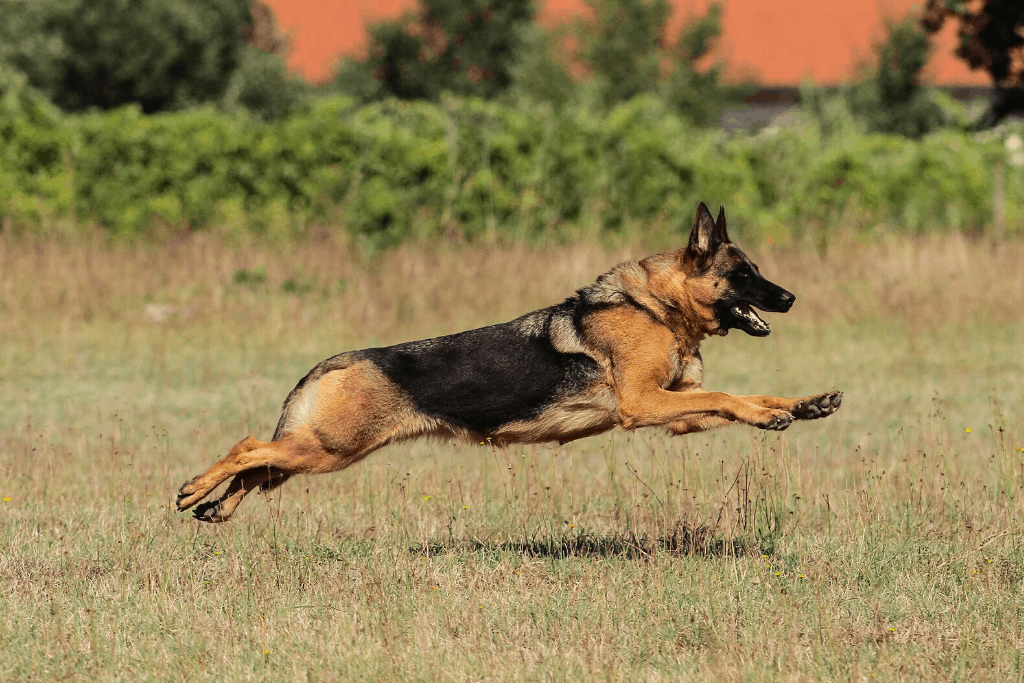





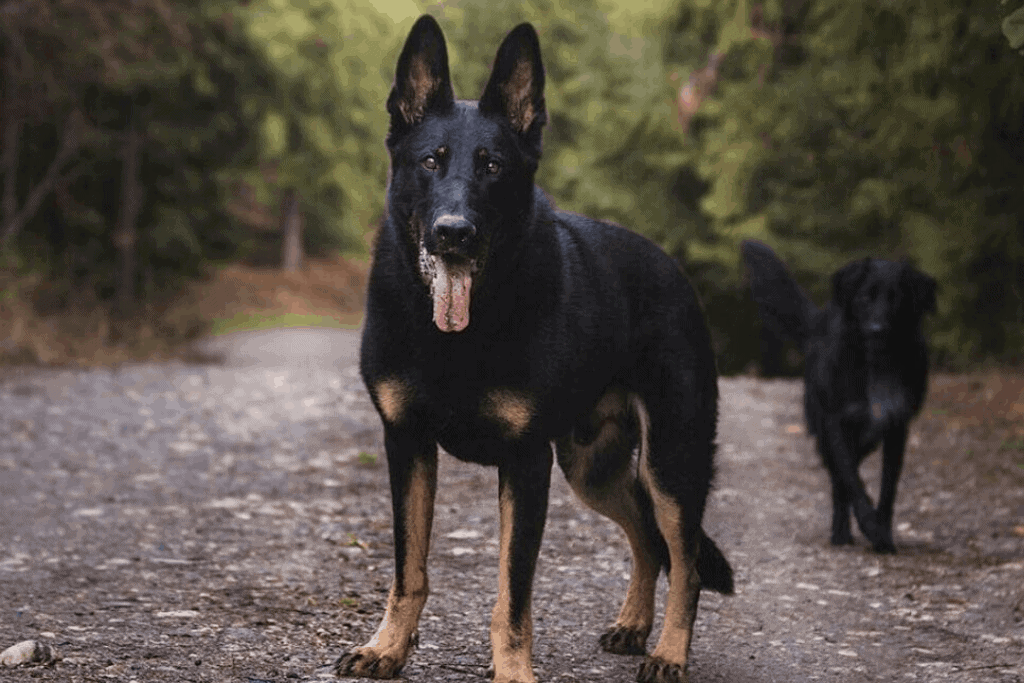


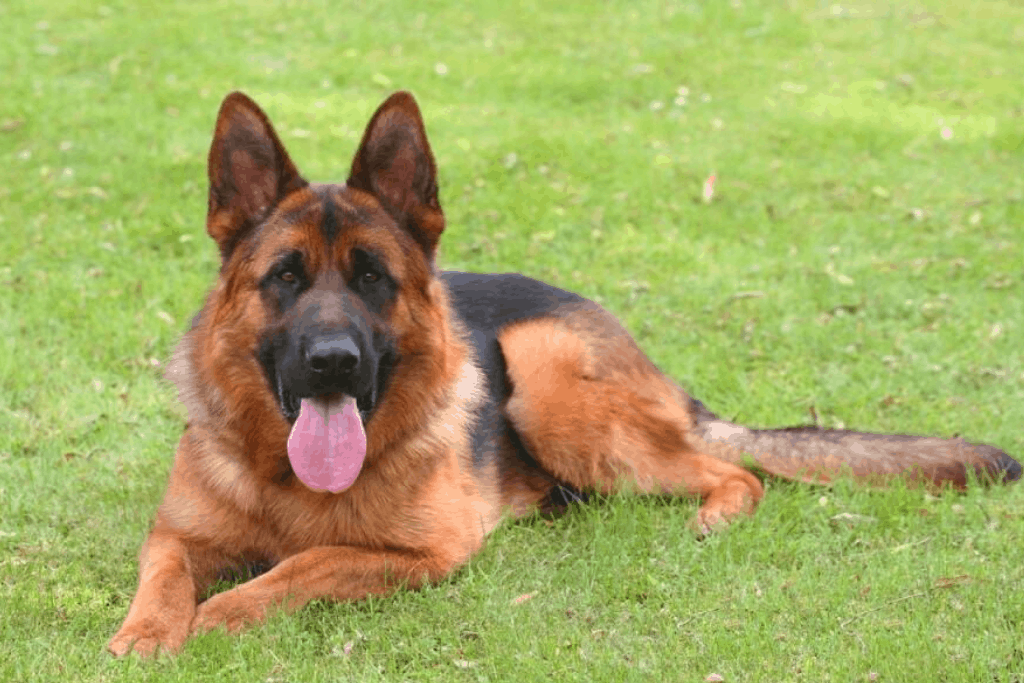


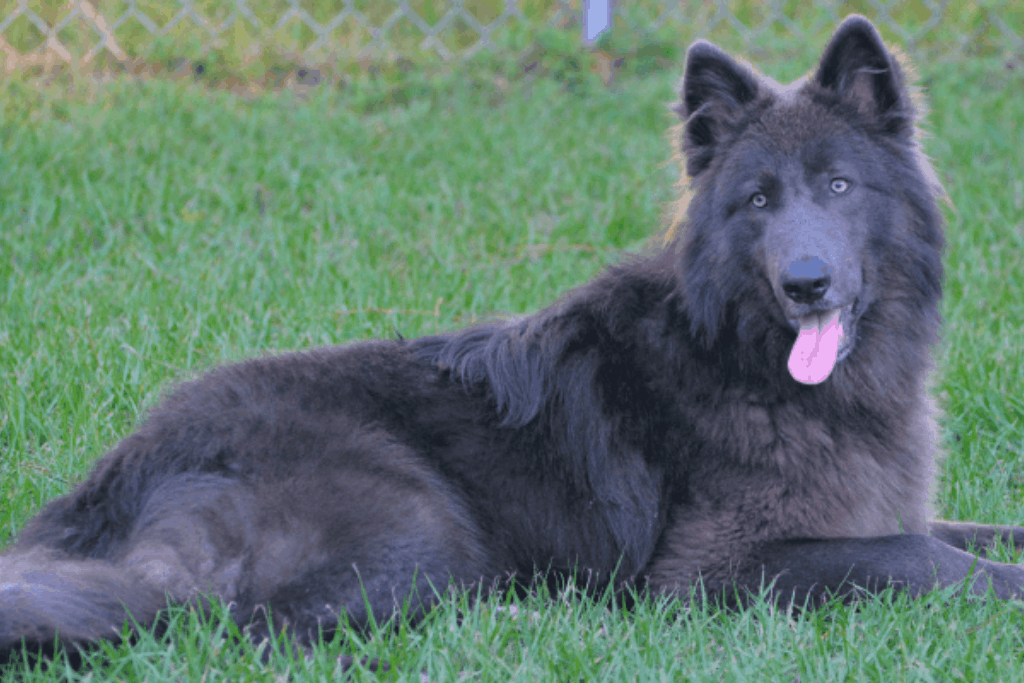


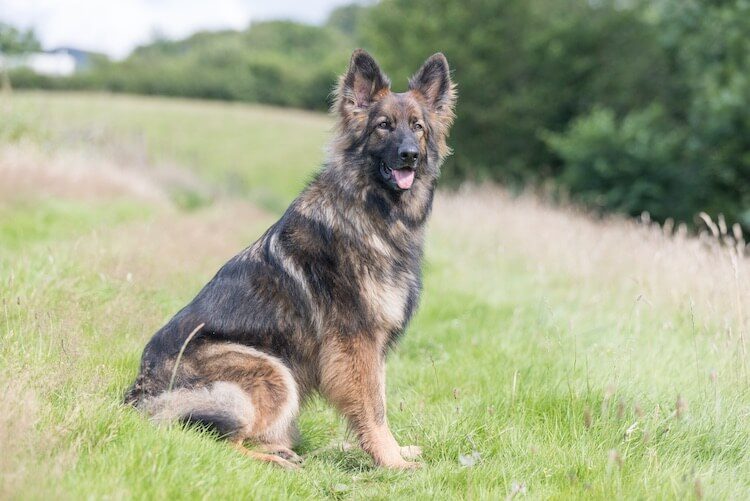









[…] complete dog breed information about German shepherd to know more about its […]
[…] Canine monocytic ehrlichiosis disease in dogs is caused because of the brown dog ticks that are generally seen on the skin of dogs commonly the German shepherd dog. […]
[…] like its fellow military dog German shepherd, the Dobermans too belong to originate from […]
[…] German Shepherd are some of the dog breeds with separation anxiety as one of their emotional and mental health […]
[…] German Shepherds are well accredited for their trainability, be it for any purpose – they are suitable for all – service dogs, therapy dogs or police dogs they can handle it all well. […]
[…] It is mostly found on the dog’s mouth or lower jaw. People consider it to be blemishes but in fact, they are just a collection of nerves covered with genetically inherent coats (like in German Shepherds). […]
[…] German Shepherd […]
[…] Personality Disorder is common in this breed. Studies have shown that Bull Terrier and German Shepherd have an overpowering drive of chasing their own tail (and not in a cute manner). Other signs can […]
[…] delicious. It is high on proteins and carbohydrates and is a perfect recipe if working dogs like a German shepherd, or Border Collie. It is a homemade dog food with ground turkey. You can also add kibbles to eat […]
[…] Schnauzer’s best friend is a German Shepherd and both are known to be the ward of predators. Farmers sometimes use both of these breeds to keep […]
[…] is known to be the fourth most intelligent dog breed of the canine kingdom after Border Collie, Poodles, and German […]
SORRY, BUT DOGS CAN EAT BONES, THEY CAN EAT COTTAGE CHEESE, THEY C AN EAT THE FATTY PARTS OF AN ANIMAL hAVEN’T YOU SEE WOLVES EAT?!?!? IF I’TS AN ANIMAL PRODUCT THEY CAN WILL AND DO EAT IT.
iN THE MEAT SECTION DOG’S WORLD FAILS TO MENTION THAT ORGAN TISSUE AND BLOOD ARE PAR FOR THE COURSE, AND ALSO DOG’S WORLD FORGOT TO SUGGEST CONNECTIVE TISSURE AND SKIN LIKE PIG EARS DOGS CAN EXTRACT RESIDUAL ANIMAL PRODUCTS FROM A WELL-FED PERSONS RAW SUAGE. !!!!!YOUR DOGS MUST BE WEAK!!!!!1